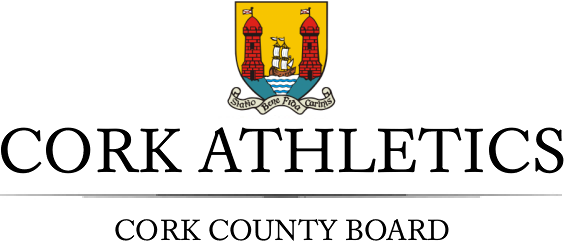

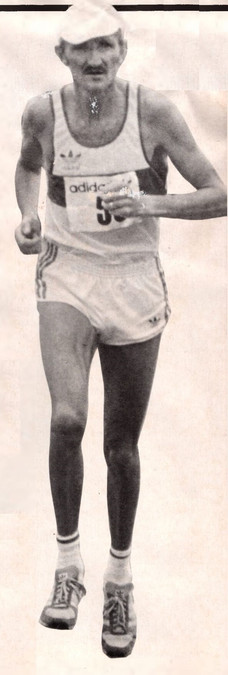
Danny McDaid
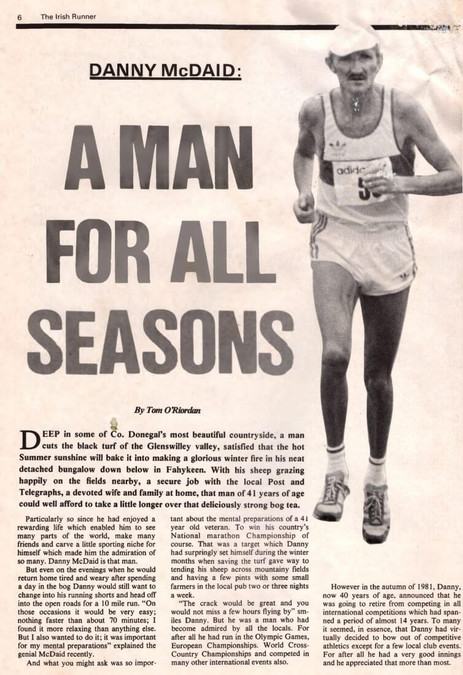 | 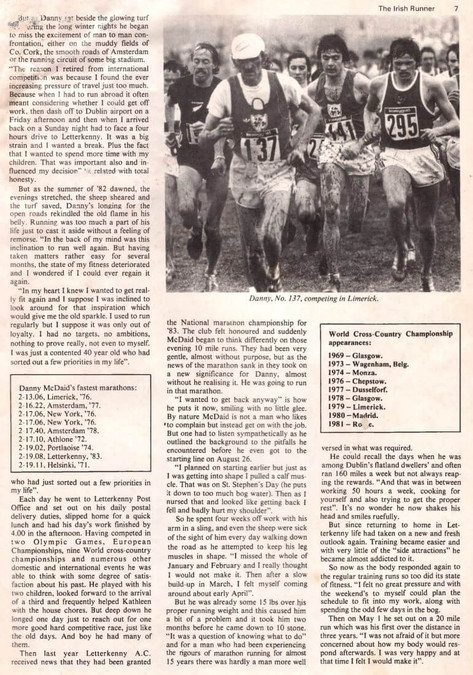 | 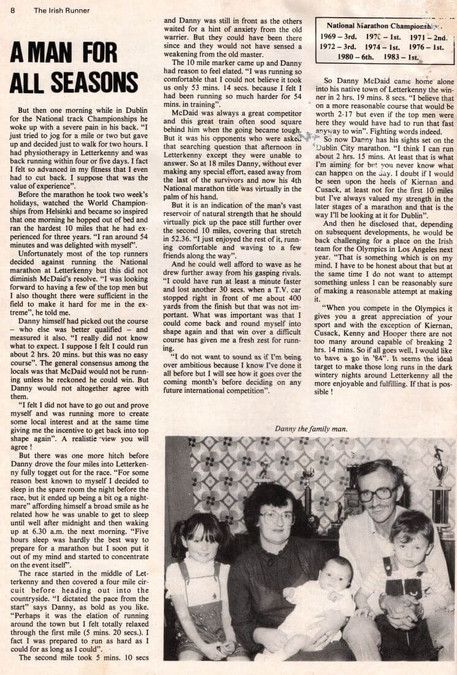 |
| Danny McDaid - Irish Runner October 1983, Vol 3, No 7, P6 - 8
Download Marathon Report - Irish Runner October 1983, Vol 3, No 7, P6 - 8 - PDF File | ||
By Tom O'Riordan
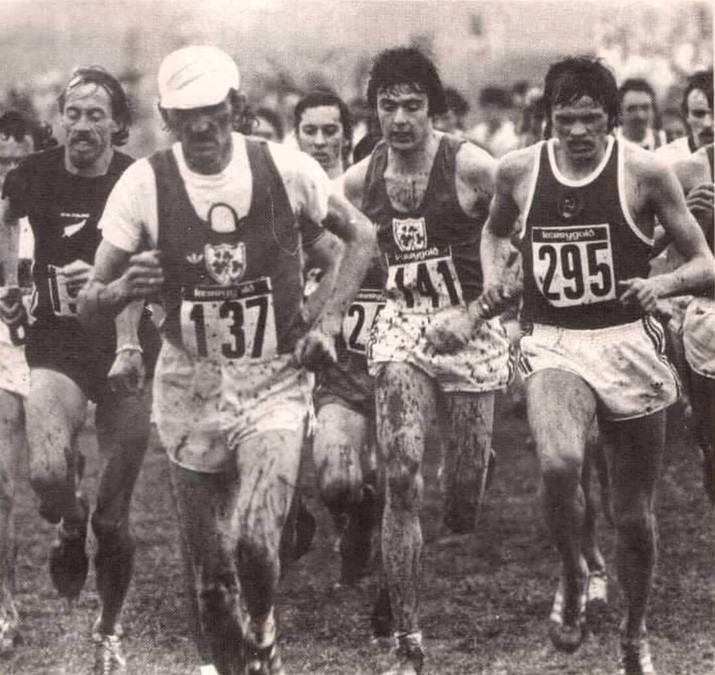
Danny, No 137, competing in Limerick
Deep in some of Co. Donegal’s most beautiful countryside, a man cuts the black turf of the Glenswilley valley, satisfied that the hot Summer sunshine will bake it into making a glorious winter fire in his neat detached bungalow down below in Fahykeen. With his sheep grazing happily on the fields nearby, a secure job with the local Post and Telegraphs, a devoted wife and family at home, that man of 41 years of age could well afford to take a little longer over that deliciously strong bog tea.
Particularly so since he had enjoyed a rewarding life which enabled him to see many parts of the world, make many
friends and carve a little sporting niche for himself which made him the admiration of so many. Danny McDaid is that man.
But even on the evenings when he would return home tired and weary after spending a day in the bog Danny would still want to change into his running shorts and head off into the open roads for a 10 mile run. “On those occasions it would be very easy; nothing faster than about 70 minutes; I found it more relaxing than anything else. But I also wanted to do it; it was important for my mental preparations” explained the genial McDaid recently.
And what you might ask was so important about the mental preparations of a 41 year old veteran. To win his country’s National marathon Championship of course. That was a target which Danny had surpringly set himself during the winter months when saving the turf gave way to tending his sheep across mountainy fields and having a few pints with some small farmers in the local pub two or three nights a week.
“The crack would be great and you would not miss a few hours flying by” smiles Danny. But he was a man who had become admired by all the locals. For after all he had run in the Olympic Games, European Championships. World Cross- Country Championships and competed in many other international events also.
However in the autumn of 1981, Danny, now 40 years of age, announced that he was going to retire from competing in all international competitions which had spanned a period of almost 14 years. To many it seemed, in essence, that Danny had virtually decided to bow out of competitive athletics except for a few local club events. For after all he had a very good innings and he appreciated that more than most.
But as Danny sat beside the glowing turf during the long winter nights he began to miss the excitement of man to man confrontation, either on the muddy fields of Co. Cork, the smooth roads of Amsterdam or the running circuit of some big stadium. “The reason I retired from international competition was because I found the ever increasing pressure of travel just too much. Because when I had to run abroad it often meant considering whether I could get off work, then dash off to Dublin airport on a Friday afternoon and then when I arrived back on a Sunday night had to face a four hours drive to Letterkenny. It was a big strain and I wanted a break. Plus the fact that I wanted to spend more time with my children. That was important also and influenced my decision” he related with total honesty.
But as the summer of ’82 dawned, the evenings stretched, the sheep sheared and the turf saved, Danny’s longing for the open roads rekindled the old flame in his belly. Running was too much a part of his life just to cast it aside without a feeling of remorse. “In the back of my mind was this inclination to run well again. But having taken matters rather easy for several months, the state of my fitness deteriorated and I wondered if I could ever regain it again.
“In my heart I knew I wanted to get realty fit again and I suppose I was inclined to look around for that inspiration which would give me the old sparkle. I used to run regularly but I suppose it was only out of loyalty. I had no targets, no ambitions, nothing to prove really, not even to myself. I was just a contented 40 year old who had sorted out a few priorities in my life”.
| Time | Location | Year |
|---|---|---|
| 02:13:06 | Limerick | 1976 |
| 02:16:22 | Amsterdam | 1977 |
| 02:17:06 | New York | 1976 |
| 02:17:40 | Amsterdam | 1978 |
| 02:17:10 | Athlone | 1972 |
| 02:19:02 | Portlaoise | 1974 |
| 02:19:08 | Letterkenny | 1983 |
| 02:19:11 | Helsinki | 1971 |
Each day he went to Letterkenny Post Office and set out on his daily postal delivery duties, slipped home for a quick lunch and had his day’s work finished by 4.00 in the afternoon. Having competed in two Olympic Games, European Championships, nine World cross-country championships and numerous other domestic and international events he was able to think with some degree of satisfaction about his past. He played with his two children, looked forward to the arrival of a third and frequently helped Kathleen with the house chores. But deep down he longed one day just to reach out for one more good hard competitive race, just like the old days. And boy he had many of them.
Then last year Letterkenny A.C. received news that they had been granted the National marathon championship for ’83. The club felt honoured and suddenly McDaid began to think differently on those evening 10 mile runs. They had been very gentle, almost without purpose, but as the news of the marathon sank in they took on a new significance for Danny, almost without he realising it. He was going to run in that marathon.
“I wanted to get back anyway” is how he puts it now, smiling with no little glee. By nature McDaid is not a man who likes to complain but instead get on with the job. But one had to listen sympathetically as he outlined the background to the pitfalls he encountered before he even got to the starting line on August 26.
“I planned on starting earlier but just as I was getting into shape I pulled a calf muscle. That was on St. Stephen’s Day (he puts it down to too much bog water). Then as I nursed that and looked like getting back I fell and badly hurt my shoulder”.
So he spent four weeks off work with his arm in a sling, and even the sheep were sick of the sight of him every day walking down the road as he attempted to keep his leg muscles in shape. “I missed the whole of January and February and I really thought I would not make it. Then after a slow build-up in March, I felt myself coming around about early April”.
But he was already some 15 lbs over his proper running weight and this caused him a bit of a problem and it took him two months before he came down to 10 stone. “It was a question of knowing what to do” and for a man who had been experiencing the rigours of marathon running for almost 15 years there was hardly a man more well versed in what was required.
He could recall the days when he was among Dublin’s flatland dwellers’ and often ran 160 miles a week but not always reaping the rewards. “And that was in between working 50 hours a week, cooking for yourself and also trying to get the proper rest”. It’s no wonder he now shakes his head and smiles ruefully.
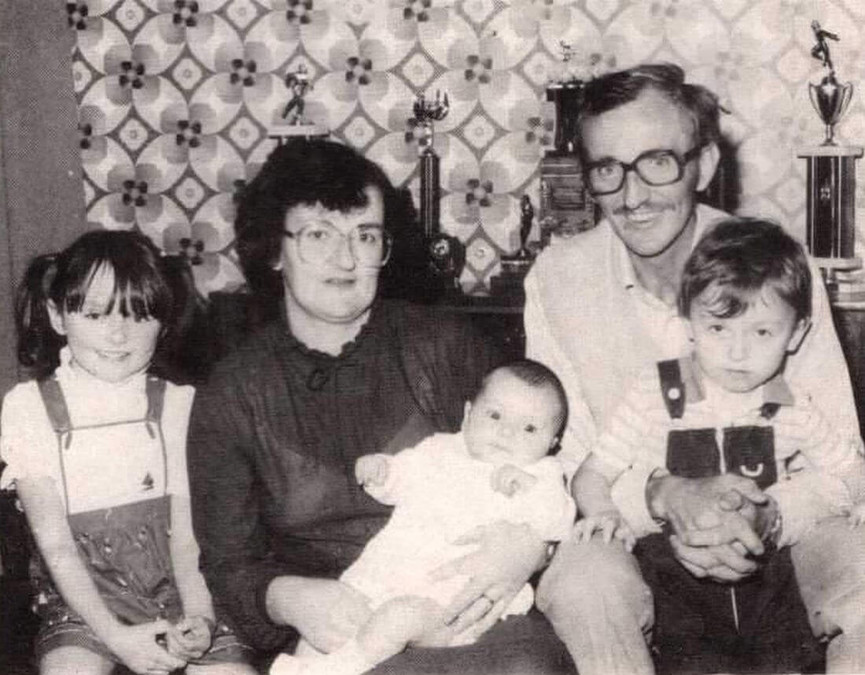
Danny McDaid The family man
But since returning to home in Letterkenny life had taken on a new and fresh outlook again. Training became easier and with very little of the “side attractions” he became almost addicted to it.
So now as the body responded again to the regular training runs so too did its state of fitness. “I felt no great pressure and with the weekend’s to myself could plan the schedule to fit into my work, along with spending the odd few days in the bog.
Then on May 1 he set out on a 20 mile run which was his first over the distance in three years. “I was not afraid of it but more concerned about how my body would respond afterwards. I was very happy and at that time I felt I would make it”.
| Year | Venue | Country |
|---|---|---|
| 1969 | Glasgow | Scotland |
| 1973 | Wagenham | Belgium |
| 1974 | Monza | Italy |
| 1976 | Chepstow | England |
| 1977 | Dusseldorf | Germany |
| 1978 | Glasgow | Scotland |
| 1979 | Limerick | Ireland |
| 1980 | Madrid | Spain |
| 1981 | Rome | Italy |
But then one morning while in Dublin for the National track Championships he woke up with a severe pain in his back. “I just tried to jog for a mile or two but gave up and decided just to walk for two hours. I had physiotherapy in Letterkenny and was back running within four or five days. I fact I felt so advanced in my fitness that I even had to cut back. I suppose that was the value of experience”.
Before the marathon he took two week’s holidays, watched the World Championships from Helsinki and became so inspired that one morning he hopped out of bed and ran the hardest 10 miles that he had experienced for three years. “I ran around 54 minutes and was delighted with myself’.
Unfortunately most of the top runners decided against running the National marathon at Letterkenny but this did not diminish McDaid’s resolve. “I was looking forward to having a few of the top men but I also thought there were sufficient in the field to make it hard for me in the extreme”, he told me.
Danny himself had picked out the course - who else was better qualified - and measured it also. “I really did not know what to expect. I suppose I felt I could run about 2 hrs. 20 mins, but this was no easy course”. The general consensus among the locals was that McDaid would not be running unless he reckoned he could win. But Danny would not altogether agree with them.
“I felt I did not have to go out and prove myself and was running more to create some local interest and at the same time giving me the incentive to get back into top shape again”. A realistic view you will agree!
But there was one more hitch before Danny drove the four miles into Letterkenny fully togged out for the race. “For some reason best known to myself I decided to sleep in the spare room the night before the race, but it ended up being a bit of a nightmare” affording himself a broad smile as he related how he was unable to get to sleep until well after midnight and then waking up at 6.30 a.m. the next morning. “Five hours sleep was hardly the best way to prepare for a marathon but I soon put it out of my mind and started to concentrate on the event itself’.
The race started in the middle of Letterkenny and then covered a four mile circuit before heading out into the countryside. “I dictated the pace from the start” says Danny, as bold as you like. “Perhaps it was the elation of running around the town but I felt totally relaxed through the first mile (5 mins. 20 secs.). I fact I was prepared to run as hard as I could for as long as I could”.
The second mile took 5 mins. 10 secs and Danny was still in front as the others waited for a hint of anxiety from the old warrier. But they could have been there since and they would not have sensed a weakening from the old master.
The 10 mile marker came up and Danny had reason to feel elated. “I was running so comfortable that I could not believe it took us only 53 mins. 14 secs, because I felt I had been running so much harder for 54 mins, in training”.
McDaid was always a great competitor and this great train often sood square behind him when the going became tough. But it was his opponents who were asked that searching question that afternoon in Letterkenny except they were unable to answer. So at 18 miles Danny, without ever making any special effort, eased away from the last of the survivors and now his 4th National marathon title was virtually in the palm of his hand.
But it is an indication of the man’s vast reservoir of natural strength that he should virtually pick up the pace still further over the second 10 miles, covering that stretch in 52.36. “I just enjoyed the rest of it, running comfortable and waving to a few friends along the way”.
And he could well afford to wave as he drew further away from his gasping rivals. “I could have run at least a minute faster and lost another 30 secs, when a T.V. car stopped right in front of me about 400 yards from the finish but that was not important. What was important was that I could come back and round myself into shape again and that win over a difficult course has given me a fresh zest for running.
“I do not want to sound as if I’m being over ambitious because I know I’ve done it all before but I will see how it goes over the coming month’s before deciding on any future international competition”.
| Year | Position |
|---|---|
| 1969 | 3rd |
| 1970 | 1st |
| 1971 | 2nd |
| 1972 | 3rd |
| 1974 | 1st |
| 1976 | 1st |
| 1980 | 6th |
| 1983 | 1st |
So Danny McDaid came home alone into his native town of Letterkenny, the winner in 2 hrs. 19 mins. 8 secs. “I believe tl on a more reasonable course that would worth 2:17 but even if the top men were here they would have had to run that fast anyway to win”. Fighting words indeed.
So now Danny has his sights set on the Dublin City marathon. “I think I can run about 2 hrs. 15 mins. At least that is what I’m aiming for but you never know what can happen on the day. I doubt if I would be seen upon the heels of Kiernan and Cusack, at least not for the first 10 miles but I’ve always valued my strength in the later stages of a marathon and that is the way I’ll be looking at it for Dublin”.
And then he disclosed that, depending on subsequent developments, he would be back challenging for a place on the Irish team for the Olympics in Los Angeles next year. “That is something which is on my mind. I have to be honest about that but at the same time I do not want to attemp something unless I can be reasonably sure of making a reasonable attempt at making it.
“When you compete in the Olympics it gives you a great appreciation of you sport and, with the exception of Kiernan Cusack, Kenny and Hooper, there are not too many around capable of breaking 2 hrs. 14 mins. So if all goes well, I would like to have a go in ’84”. It seems the ideal target to make those long runs in the dark wintery nights around Letterkenny all the more enjoyable and fulfilling. If that is possible !
BLE National Marathon Letterkenny 1983 - Report and Results
Archived Articles
Looking Back - 25 Years of BLE in Cork
Subscribe to Irish Runner Magazine
Starts Friday November 20th 2020
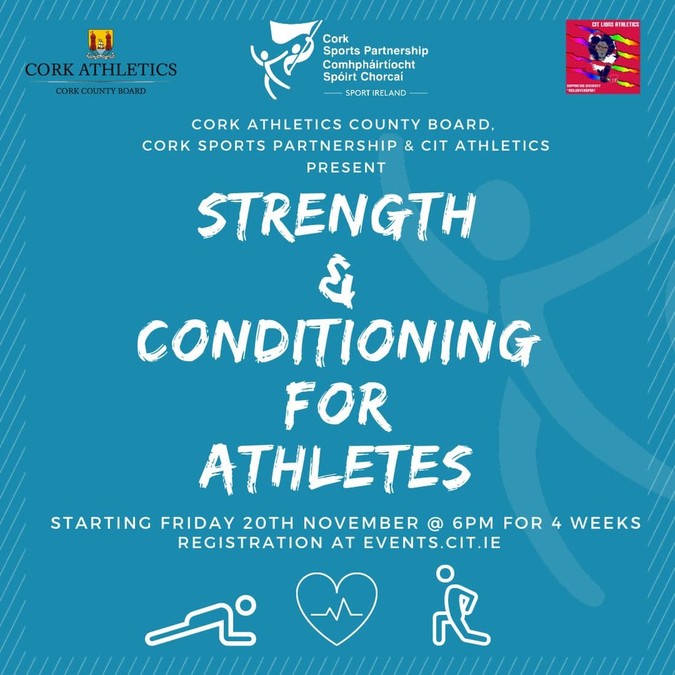
Cork Athletics County Board, Cork Sports Partnership & CIT Lions Athletics Club have teamed up to coordinate a new 4 week S&C programme, starting on Friday 20th November, at 6pm
Sign up for all four sessions, or any one or more sessions. Cost is €5 persession, or €18 for all four
The sessions will be delivered via Zoom
This email address is being protected from spambots. You need JavaScript enabled to view it.
November 9th 2020
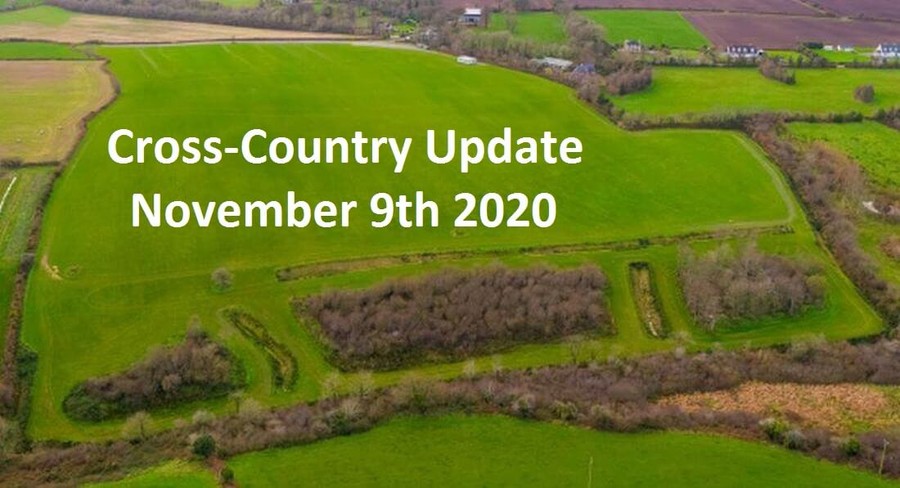
A virtual meeting of the Officers of Cork Athletics County Board, was held last Wednesday evening, November 4th. It was decided, in as far as circumstances allow, that the remaining County Cross-Country Championships should go ahead whenever possible, with all Championships taking place, as previously planned, at the Board's grounds at Slieveroe, Riverstick.
With the entire country remaining at Level 5 until at least December 1st, we will be fortunate to have any of these events this side of New Year, particularly as no events will go ahead until Cork is back to Level 2, at highest, AND a total on-site headcount of at least 200 is permitted.
Nevertheless it was agreed that the County Senior and Junior Championships, and, possibly, one set of Juvenile Championsips, should be held before year-end, if at all possible. It's a big ask that circumstances might allow this....But fingers crossed!
It was also decided that the outstanding events will be held over four days, rather than, as originally scheduled, 3. As we will be extremely lucky to hold any events during 2020, the Board also resolved to extend the Cross-Country season up to February 2021.
The format of the remaining Days will be similar to those of Day 1 (Sunday October 4th), when the County Novice, Under 23 and Under-14 & Under-16 Championships were held.
There will be no gate charge, to minimise contact, and maximise social distance, and it is planned to have chip recording of positions ... this will elimate the regulary queues that form at the end of Juvenile XC races, in particular. Chip timing is likely to be used for adult races (only) - Juvenile races will be by position only - no Juvenile times will be published. If they are run on their own, i.e. without Juvenile races, the County Senior and Junior Championships are likely to be hand timed.
The site will be cleared of all Athletes and Parents/Guardians after each and every race - this is to ensure that the 200 person limit is not breached
As was the case for Day 1, nobody will be admitted to ANY of the Championships unless that are:
There will be NO Admission for Spectators, Coaches, Tallymen/women. On Day 1, several people who did not meet the criteria for admission arrived at the gate and were refused, with, sadly, a minority verbally abusing the Gate Personnel.
For each individual race, each competing club will be expected to nominate a single person, from its competing athletes, to collect and distribute that club's numbers. Only this person should approach the Competition Secretary in the Race Office.
Similarly for Juvenile races, where one of the Parents/Guardians of competing Juvenile athletes should be the designated person, i.e. a separate person shall fill this function for each and every race.
This editorial is the Webmaster's personal perspective, and does not necessarily reflect that of the Board
Day 1 was run under HSE, Sport Ireland and Athletics Ireland Covid-19 Protocols - In effect it was Covid-19, with a Cross-Country meet run under those conditions. Cork Athletics received very many commendations and praise, both on the day and subsequently, for the manner in which the meet was held, and wishes to thank and acknowledge these sentiments.
A small minority seemingly had expectations that Day 1 would be Cross-Country as it always was, and would be run in a similar fashion to some other events that have been run in the Covid era - with the emphasis on Cross-Country, with adjustments for Covid-19.
Cork Athletics relies on volunteers to organise it's events. For Day 1, some volunteers were on site at 7am and didn't leave until after 4pm. It is sad that a small minority felt it appropriate to criticise these volunteers. There is a phrase "'Twenty 'Attaboys' are wiped out by One 'Aw Sh1t'..."
As long as we remain under the Covid cloud, Cross-Country Day 2, and subsequent days, will be organised pretty much in a similar fashion to Day 1.
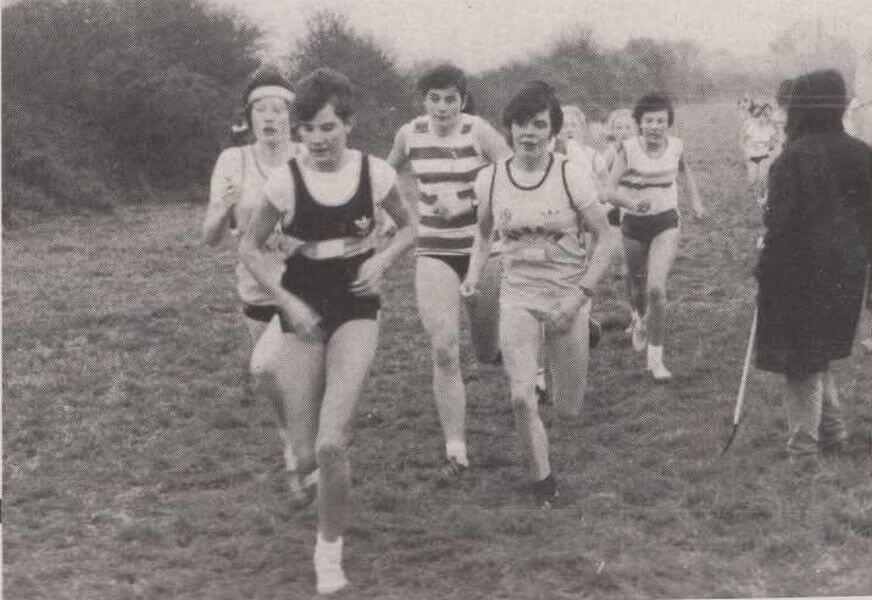
Sonia O'Sullivan leads Anita Philpott (on left) and Carmel Crowley
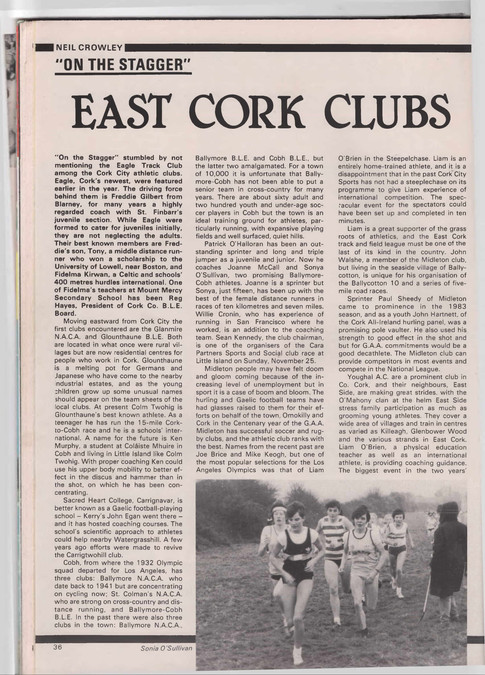 | 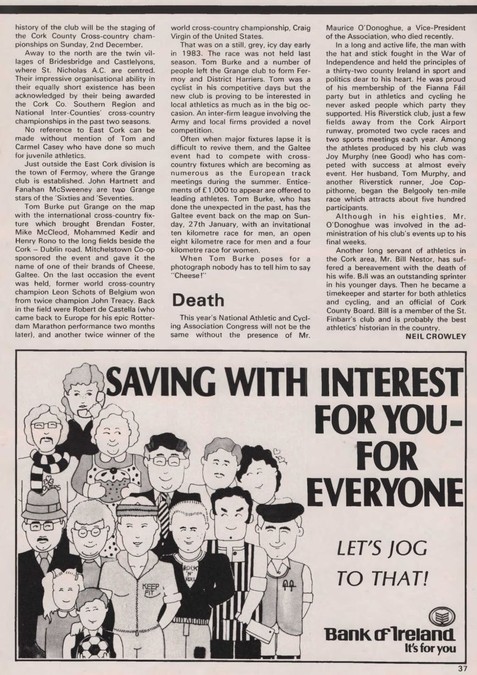 |
| Marathon Magazine article, Vol 22, Nos 9 & 10, P 36-37 | |
Download Marathon Magazine article, Vol 22, Nos 9 & 10, P 36-37
"On the Stagger" stumbled by not mentioning the Eagle Track Club among the Cork City athletic clubs. Eagle, Cork's newest, were featured earlier in the year. The driving force behind them is Freddie Gilbert from Blarney, for many years a highly regarded coach with St. Finbarr's juvenile section. While Eagle were formed to cater for juveniles initially, they are not neglecting the adults. Their best known members are Freddie's son, Tony, a middle distance runner who won a scholarship to the University of Lowell, near Boston, and Fidelma Kirwan, a Celtic and schools' 400 metres hurdles international. One of Fidelma's teachers at Mount Mercy Secondary School has been Reg Hayes, President of Cork Co. B.L.E. Board.
Moving eastward from Cork City the first clubs encountered are the Glanmire N.A.C.A. and Glounthaune B.L.E. Both are located in what once were rural villages but are now residential centres for people who work in Cork. Glounthaune is a melting pot for Germans and Japanese who have come to the nearby industrial estates, and as the young children grow up some unusual names should appear on the team sheets of the local clubs. At present Colm Twohig is Glounthaune's best known athlete. As a teenager, he has run the 15-mile Cork-to-Cobh race, and he is a schools' international. A name for the future is Ken Murphy, a student at Colaiste Mhuire in Cobh, and living in Little Island, like Colm Twohig. With proper coaching Ken could use his upper body mobility to better effect in the discus and hammer than in the shot, on which he has been concentrating.
Sacred Heart College, Carrignavar, is better known as a Gaelic football-playing school - Kerry's John Egan went there - and it has hosted coaching courses. The school's scientific approach to athletes could help nearby Watergrasshill. A few years ago efforts were made to revive the Carrigtwohill club.
Cobh, from where the 1932 Olympic squad departed for Los Angeles, has three clubs: Ballymore N.A.C.A. who date back to 1941 but are concentrating on cycling now; St. Colman's N.A.C.A. who are strong on cross-country and distance running, and Ballymore-Cobh B.L.E. In the past there were also three clubs in the town: Ballymore N.A.C.A., Ballymore B.L.E. and Cobh B.L.E., but the latter two amalgamated. For a town of 10,000 it is unfortunate that Ballymore-Cobh has not been able to put a senior team in cross-country for many years. There are about sixty adult and two hundred youth and under-age soccer players in Cobh but the town is an ideal training ground for athletes, particularly running, with expansive playing fields and well surfaced, quiet hills.
Patrick O'Halloran has been an outstanding sprinter and long and triple jumper as a juvenile and junior. Now he coaches Joanne McCall and Sonya O'Sullivan, two promising Ballymore- Cobh athletes. Joanne is a sprinter but Sonya, just fifteen, has been up with the best of the female distance runners in races of ten kilometres and seven miles. Willie Cronin, who has experience of running in San Francisco where he worked, is an addition to the coaching team. Sean Kennedy, the club chairman, is one of the organisers of the Cara Partners Sports and Social club race at Little Island on Sunday, November 25.
Midleton people may have felt doom and gloom coming because of the increasing level of unemployment but in sport it is a case of boom and bloom. The hurling and Gaelic football teams have had glasses raised to them for their efforts on behalf of the town, Omokilly and Cork in the Centenary year of the G.A.A. Midleton has successful soccer and rugby clubs, and the athletic club ranks with the best. Names from the recent past are Joe Brice and Mike Keogh, but one of the most popular selections for the Los Angeles Olympics was that of Liam O'Brien in the Steepelchase. Liam is an entirely home-trained athlete, and it is a disappointment that, in the past, Cork City Sports has not had a steeplechase on its programme to give Liam experience of international competition. The spectacular event for the spectators could have been set up and completed in ten minutes.
Liam is a great supporter of the grass roots of athletics, and the East Cork track and field league must be one of the last of its kind in the country. John Walshe, a member of the Midleton club, but living in the seaside village of Ballycotton, is unique for his organisation of the Ballycotton 10 and a series of five-mile road races.
Sprinter Paul Sheedy of Midleton came to prominence in the 1983 season, and as a youth John Hartnett, of the Cork All-Ireland hurling panel, was a promising pole vaulter. He also used his strength to good effect in the shot and but for G.A.A. commitments would be a good decathlete. The Midleton club can provide competitors in most events and compete in the National League.
Youghal A.C. are a prominent club in Co. Cork, and their neighbours, East Side, are making great strides, with the O'Mahony clan at the helm East Side stress family participation as much as grooming young athletes. They cover a wide area of villages and train in centres as varied as Killeagh, Glenbower Wood and the various strands in East Cork. Liam O'Brien, a physical education teacher as well as an international athlete, is providing coaching guidance. The biggest event in the two years' history of the club will be the staging of the Cork County Cross-country championships on Sunday, 2nd December.
Away to the north are the twin villages of Bridesbridge and Castlelyons, where St. Nicholas A.C. are centred. Their impressive organisational ability in their equally short existence has been acknowledged by their being awarded the Cork Co. Southern Region and National Inter-Counties' cross-country championships in the past two seasons.
No reference to East Cork can be made without mention of Tom and Carmel Casey who have done so much for juvenile athletics.
Just outside the East Cork division is the town of Fermoy, where the Grange club is established. John Hartnett and Fanahan McSweeney are two Grange stars of the 'Sixties and 'Seventies.
Tom Burke put Grange on the map with the international cross-country fixture which brought Brendan Foster, Mike McCleod, Mohammed Kedir and Henry Rono to the long fields beside the Cork - Dublin road. Mitchelstown Co-op sponsored the event and gave it the name of one of their brands of Cheese, Galtee. On the last occasion the event was held, former world cross-country champion Leon Schots of Belgium won from twice champion John Treacy. Back in the field were Robert de Castella (who came back to Europe for his epic Rotterdam Marathon performance two months later), and another twice winner of the
world cross-country championship, Craig Virgin of the United States.
That was on a still, grey, icy day early in 1983. The race was not held last season. Tom Burke and a number of people left the Grange club to form Fermoy and District Harriers. Tom was a cyclist in his competitive days but the new club is proving to be interested in local athletics as much as in the big occasion. An inter-firm league involving the Army and local firms provided a novel competition.
Often when major fixtures lapse it is difficult to revive them, and the Galtee event had to compete with crosscountry fixtures which are becoming as numerous as the European track meetings during the summer. Enticements of £ 1,000 to appear are offered to leading athletes. Tom Burke, who has done the unexpected in the past, has the Galtee event back on the map on Sunday, 27th January, with an invitational ten kilometre race for men, an open eight kilometre race for men and a four kilometre race for women.
When Tom Burke poses for a photograph nobody has to tell him to say "Cheese!”
This year's National Athletic and Cycling Association Congress will not be the same without the presence of Mr. Maurice O'Donoghue, a Vice-President of the Association, who died recently.
In a long and active life, the man with the hat and stick fought in the War of Independence and held the principles of a thirty-two county Ireland in sport and politics dear to his heart. He was proud of his membership of the Fianna Fail party but in athletics and cycling he never asked people which party they supported. His Riverstick club, just a few fields away from the Cork Airport runway, promoted two cycle races and two sports meetings each year. Among the athletes produced by his club was Joy Murphy (nee Good) who has competed with success at almost every event. Her husband, Tom Murphy, and another Riverstick runner, Joe Copithorne, began the Belgooly ten-mile race which attracts about five hundred participants.
Although in his eighties, Mr. O'Donoghue was involved in the administration of his club's events up to his final weeks.
Another long servant of athletics in the Cork area, Mr. Bill Nestor, has suffered a bereavement with the death of his wife. Bill was an outstanding sprinter in his younger days. Then he became a timekeeper and starter for both athletics and cycling, and an official of Cork County Board. Bill is a member of the St. Finbarr's club and is probably the best athletics' historian in the country.
- NEIL CROWLEY
Archived Articles
Looking Back - 25 Years of BLE in Cork
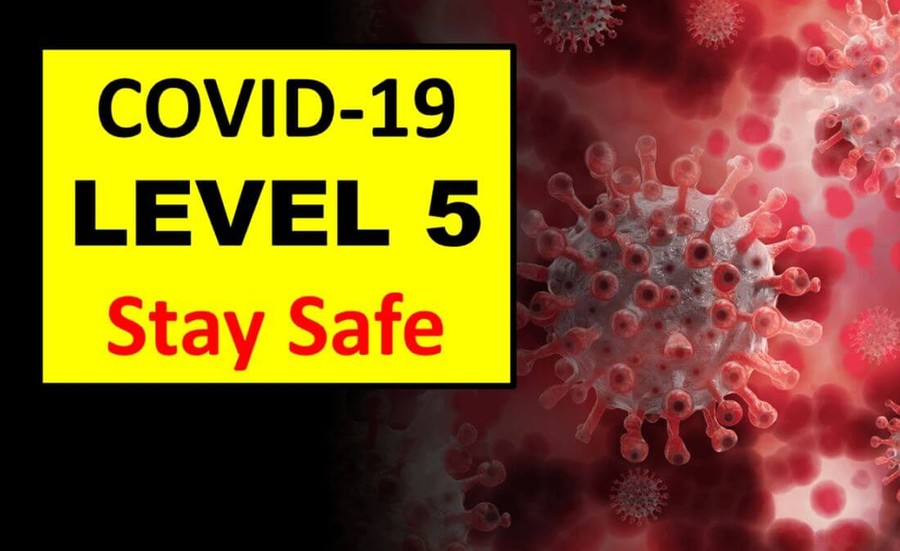
Covid 19 Level 5
Note: This is a shortened version - full release is available on Athletics Ireland website
Ireland is now at Level 5 of the Framework for Restrictive Measures. Level 5 is expected to be in place for the next 6 weeks.
The Government’s guidance on Level 5 is clear, with the risk to public health meaning that individuals are asked to stay at home, with certain exceptions.
With regard to sport, the restrictions applicable in Level 5 are as follows:
No training or matches should take place with the following exceptions:
- Non-contact training can continue for school aged children, outdoors in pods of 15
- Professional, elite sports are permitted to continue behind closed doors
As they are not recognised as essential services, the decision of Government is that all gyms, leisure centres, swimming pools and other sports facilities must close in the Level 5 restrictions. This includes both indoor and outdoor sports facilities.
It is permitted to open sports facilities for training sessions and scheduled matches for the exempted categories of sport, i.e. high performance and professional games. It will also be permitted to open outdoor sports facilities for structured training sessions by school aged children, i.e. those aged 18 years and younger, in pods of no more than 15, under the supervision of designated coaches, and in compliance with approved COVID-19 protocols and all relevant public health guidance.
During these training sessions it will only be permitted for participants and relevant coaching and support personnel to be present. In the case of children’s sport, parents will be permitted to attend for child safeguarding purposes, however they will be required to comply with social distancing and other public health advice.
Professional & Elite Sport
Professional and elite sport must adhere to comprehensive protocols, which ensure extraordinary levels of control and compliance are in place. Professional and elite sport is defined as follows;
- Athletes on the 2020 International Carding Scheme
It is important to note that protocols as they apply to each sport will be prepared and communicated directly by the respective National Governing Bodies.
Specific guidance on non-contact training for school aged children will be issued by Government. In the interim, the following is advised:
"As we enter Level 5 restrictions, Leevale training sessions have been modified to ensure that we are fully compliant with the Government's Resilience and Recovery 2020-2021: Plan for Living with COVID-19.
Senior Athletes: All senior training sessions are suspended for the duration of level 5 restrictions. Senior athletes are not permitted to use the athletic track or HPC, but may continue to train as individuals within 5K of their home. Please contact your coach to review your training plan.
Juvenile Athletes: Non Contact training for school going athletes will continue as normal, outdoors in pods of 15. Level 5 Covid guidance allows an exception to travel greater than 5km to take school aged children to permitted training. Athletes must only attend a session at the invitation of their coach so parents/guardians should stay in close contact with your child's coach for ongoing updates.
The usual covid 19 precautions applies; all athletes must bring hand sanitiser, there can be no physical contact, social distancing must be observed.
High Performance Centre: The HPC is now closed and will remained closed for the duration of the level 5 restrictions.
Elite Athletes: Leevale AC is able to organise access to training facilities for our Elite Athletes. Athletes seeking to access training facilities must provide a letter from their federation confirming their elite status.
All our athletes and club members are encouraged to keep on training and prepared for future competition. Stay in contact with your coach and fellow club members. Please adhere to all health guidelines. Please be considerate to the pubic when training in public parks or on the roadway.
In the meantime stay safe and stay fit, We look forward to the return of all Leevale Athletes at the start of December."
"Tonight the country goes to level 5 until December 1. The effect of this on society is well documented elsewhere. All club members are implored to follow fully the government guidelines. From an athletics and Clonliffe Harriers perspective the following applies:
Juvenile athletes who are still attending school can continue to train with the club at organised training sessions.
The restriction on not being able to travel in excess of 5KM does not apply to this group.
These athletes must remain in a strict pod system not exceeding 15, to include the coach.
Morton Stadium continues to be available for these athletes on the usual Clonliffe times: Tuesdays and Thursdays from 7 PM, Sundays 9:30 AM. The clubhouse will remain closed and athletes must arrive ready to train.
The usual covert 19 criteria applies as regards all athletes must bring hand sanitiser, there can be no physical contact, social distancing must be observed, it is strongly advised that all athletes arriving should wear face masks.
Parents cannot remain at the training session and should not leave their vehicle but rather should leave the stadium and come back at the appointed time for collections.
Coaches must continue to make a booking for their pod with the names and contact numbers of all in the pod. Coaches are advised to wear face coverings at all times.
Athletes must only attend a session at the invitation of their coach. Athletes must therefore remain in contact with their coach. Athletes cannot simply “turn up”.
All athletes U/19, junior, senior, masters must train individually and must remain within 5km of their home. Those athletes cannot train on Clonliffe sessions time. The only exceptions are athletes who fulfill the Athletics Ireland criteria of an elite athlete.
Junior/senior and masters athletes should remain in contact with their coaches for their training schedules for these weeks ahead.
All races and events are cancelled at this time. The national cross country championships are deferred from November 22 to date in the future which has not as yet been advised (earlier information said that this championships can take place at any time up to the end of February)
All our athletes and club members are encouraged to remain positive, keep on training and prepared for future competition. Stay in contact with your fellow club members, please adhere to all health guidelines. When training in public parks on the roadway it is strongly advised to give members of the public as much room as possible, there is currently an anti-runner bias out there.
We look forward to the return of all to Clonliffe Harriers at the start of December.
Keep to the forefront of your thoughts the motto of this great club of ours: Nil desperandum."
Excerpt from Government Guidelines
(Monday Oct 19th)
These are controlled environments with a named event organiser, owner or manager. For example: outdoor Arts events, training events.
No organised outdoor gatherings should take place.
No training or matches should take place, with the following exceptions:
Non-contact training can continue for school aged children, outdoors in pods of 15
Professional, elite sports are permitted to continue behind closed doors
All other training activities should be individual only.
*******************************
Under Level 3, clubs could continue with training activities, and confined club time-trials. These are now suspended* for the duration of Level 5, and beyond, assuming that, following Level 5, that we step back to Level 4.
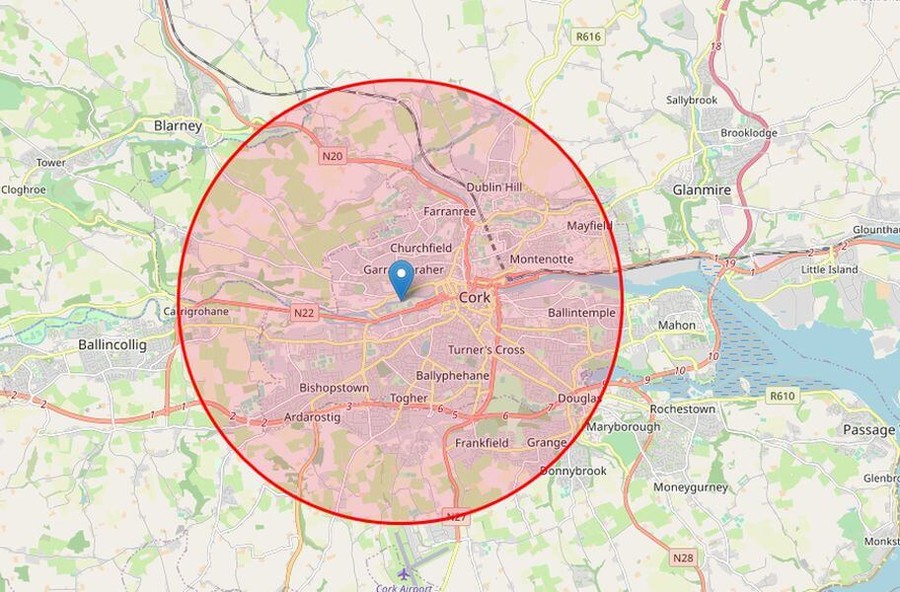
Use this Online Calculator from 2kmfromhome.com to work out your own local 5km limit. If the limit changes (unlikely) just enter the new radius figure into the calculator
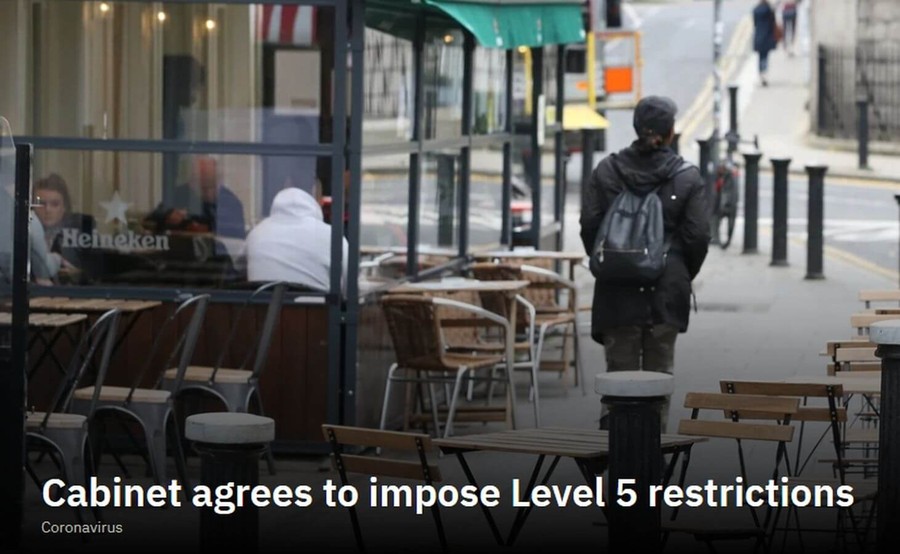
The new restrictions will be formally announced at 9pm this evening, will come into force at midnight on Wednesday, and will last for 6 weeks.
Note: This is a shortened version - full release is available on Athletics Ireland website
Ireland is now at Level 5 of the Framework for Restrictive Measures. Level 5 is expected to be in place for the next 6 weeks.
The Government’s guidance on Level 5 is clear, with the risk to public health meaning that individuals are asked to stay at home, with certain exceptions.
With regard to sport, the restrictions applicable in Level 5 are as follows:
No training or matches should take place with the following exceptions:
- Non-contact training can continue for school aged children, outdoors in pods of 15
- Professional, elite sports are permitted to continue behind closed doors
As they are not recognised as essential services, the decision of Government is that all gyms, leisure centres, swimming pools and other sports facilities must close in the Level 5 restrictions. This includes both indoor and outdoor sports facilities.
It is permitted to open sports facilities for training sessions and scheduled matches for the exempted categories of sport, i.e. high performance and professional games. It will also be permitted to open outdoor sports facilities for structured training sessions by school aged children, i.e. those aged 18 years and younger, in pods of no more than 15, under the supervision of designated coaches, and in compliance with approved COVID-19 protocols and all relevant public health guidance.
During these training sessions it will only be permitted for participants and relevant coaching and support personnel to be present. In the case of children’s sport, parents will be permitted to attend for child safeguarding purposes, however they will be required to comply with social distancing and other public health advice.
Professional & Elite Sport
Professional and elite sport must adhere to comprehensive protocols, which ensure extraordinary levels of control and compliance are in place. Professional and elite sport is defined as follows;
- Athletes on the 2020 International Carding Scheme
It is important to note that protocols as they apply to each sport will be prepared and communicated directly by the respective National Governing Bodies.
Specific guidance on non-contact training for school aged children will be issued by Government. In the interim, the following is advised:
These are controlled environments with a named event organiser, owner or manager. For example: outdoor Arts events, training events.
No organised outdoor gatherings should take place.
No training or matches should take place, with the following exceptions:
Non-contact training can continue for school aged children, outdoors in pods of 15
Professional, elite sports are permitted to continue behind closed doors
All other training activities should be individual only.
*******************************
Along with Government and HSE guidelines, Sport Ireland and Athletics Ireland will both respectively be issuing updated guidelines specific to sport, and athletics, in the next day or two
Under Level 3, clubs could continue with training activities, and confined club time-trials. These are now suspended* for the duration of Level 5, and beyond, assuming that, following Level 5, that we step back to Level 4.

Use this Online Calculator from 2kmfromhome.com to work out your own local 5km limit. If the limit changes (unlikely) just enter the new radius figure into the calculator
We are entering a difficult phase for everyone, with people's mental and physical health on the line. Businesses will be badly affected.
It is incumbent on everyone to do their utmost to ensure that the move to Level 5 is effective.
Numbers here in Cork are climbing rapidly ... 232 cases in Cork today, and over 50,000 nationwide to date. We ALL have a part to play.
Its NOT personal choice - the actions of the few affect others... including Loved ones, the elderly, thevulnerable.. and also result in businesses closing (and being closed).
Moral: The actions of the few affect the many

South Munster Schools Athletic Association
Liam O'Brien has done tremendous work in compiling the South Munster Schools Athletics Association's Champions Roll of Honour, from 1929 through to 2020, however he is looking for YOUR help in filling in full christian names, where initials only are available, and also, spelling corrections.
If you can help, This email address is being protected from spambots. You need JavaScript enabled to view it.
South Munster Schools Roll of Honour (PDF File)
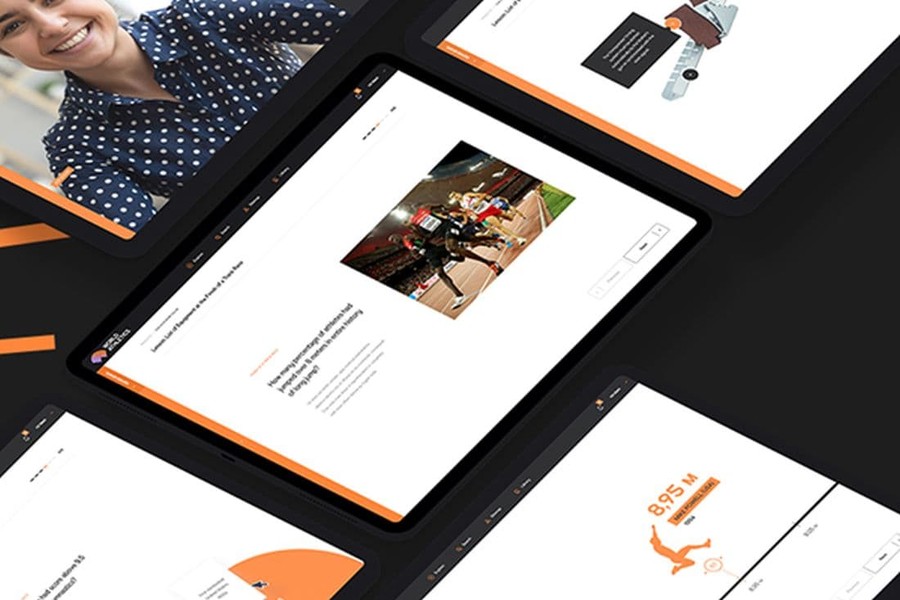
World Athletics eLearning Portal
Aimed at anyone interested in learning more about athletics, World Athletics has launched an innovative eLearning platform designed to educate everyone, from newcomers to experts.
The Education Hub is hosted on the World Athletics (formerly IAAF) website, and will provide educational courses and webinars for anyone with a general interest in athletics, e.g. school teachers and club volunteers, along with key stakeholder groups, including Member Federations, technical officials, coaches and medical professionals.
Initially, courses available include videos for novice technical officials, club and community level coaches , and those who want to improve their knowledge of the rules of the sport.
Further modules that will be added over the next year include:
High Jump
In this module, we will introduce you to the basic set-up of the site for a high jump competition, the roles and duties of a typical team of officials, how a standard competition is conducted and the rules which apply. At the end of the module, we will look at how the result of a high jump competition is determined.
In a later course, we will elaborate on the additional procedures and rules that may apply at a higher level.
1.1 Lesson Opening: What we will cover
1.2 Competition Setup: How do you set-up for High Jump?
1.3 Competition Officials: How do you place them for High Jump?
1.4 Competition Participants: How does the athletes' arrival unfold?
Pole Vault
Lesson Opening: What we will cover
In this course, we will introduce you to the basic set-up of the site for a pole vault competition, the roles and duties of a typical team of officials, how a standard competition is conducted and the rules which apply.
Later we will elaborate the additional procedures and rules that may apply at a higher level.
2.1 Lesson Opening: What we will cover
2.2 Competition set-up: How to set-up for Pole Vault?
2.3 Competition Officials: How do you place them for Pole Vault?
2.4 Competition Details: What are the pole specifications?
2.5 Competition Participants: How does the athletes' arrival unfold?
2.6 & 2.7 Competition Details: How does the competition unfold?
2.8 Competition Jumps: How are Pole Vault jumps validated?
2.9 Competition Details: What constitutes special circumstances?
2.10 Competition Details: What constitutes passing?
2.11 Competition Details: What are the time limits for Pole Vault?
2.12 Competition Rules: How are results assessed?
2.13 Competition Jumps: How is a jump-off conducted?
Long & Triple Jump
3.1 Lesson Opening: What we will cover
3.2 Competition set-up: How to set-up for Long & Triple jump?
3.3 Competition Officials: How do you place them for Long & Triple jump?
3.4 Competition Participants: How does the athletes' arrival unfold?
3.5 Competition Details: How does the competition unfold?
3.6 & 3.7 Competition Jumps: How are Long & Triple jumps measured & validated?
3.8 Competition Jumps: What makes a valid take-off?
3.9 Competition Jumps: What makes a valid landing?
3.10 Competition Details: What are the extra procedures for Triple jump?
3.11 Competition Details: What constitutes passing?
3.12 Competition Details: What are the time limits for Long & Triple jump?
3.13 Competition Details: How are results assessed?
Discus Throw
4.1 Lesson Opening: What we will cover
4.2 Competition Set-up: How to set-up for Discus Throw?
4.3 Competition Officials: How do you place them for Discus Throw?
4.4 Competition Participants: How does the athletes' arrival unfold?
4.5 Competition Details: How does the competition unfold?
4.6 & 4.7 Competition Throws: How are Discus Throws measured & the specifications?
4.8 Competition Throws: What makes a valid throw?
4.9 Competition Throws: What makes a valid landing?
4.10 Competition Details: Special rules?
4.11 Competition Details: What constitutes passing?
4.12 Competition Details: What are the time limits for Discus Throw?
4.13 Competition Details: How are results assessed?
4.14 Competition Details: Safety
Shot Put
5.1 Lesson Opening: What we will cover
5.2 Competition Set-up: How to set-up for Shot Put?
5.3 Competition Officials: How do you place them for Shot Put?
5.4 Competition Participants: How does the athletes' arrival unfold?
5.5 Competition Details: How does the competition unfold?
5.6 & 5.7 Competition Throws: How are puts measured & validated?
5.8 Competition Throws: What makes a valid put?
5.9 Competition Throws: What makes a valid landing?
5.10 Competition Details: Special rules?
5.11 Competition Details: What constitutes passing?
5.12 Competition Details: What are the time limits for Shot Put?
5.13 Competition Details: How are results assessed?
5.14 Competition Details: Safety
Hammer Throw
6.1 Lesson Opening: What we will cover
6.2 Competition set-up: How to set-up for Hammer Throw?
6.3 Competition Officials: How do you place them for Hammer Throw?
6.4 Competition Participants: How does the athletes' arrival unfold?
6.5 Competition Details: How does the competition unfold?
6.6 & 6.7 Competition Throws: How are Hammer Throws measured & the specifications?
6.8 Competition Throws: What makes a valid throw?
6.9 Competition Throws: What makes a valid landing?
6.10 Competition Details: Special rules?
6.11 Competition Details: What constitutes passing?
6.12 Competition Details: What are the time limits for Hammer Throw?
6.13 Competition Details: What are the special circumstances for Hammer Throw?
6.14 Competition Details: How are results assessed?
6.15 Competition Details: Safety
Javelin Throw
7.1 Lesson Opening: What we will cover
7.2 Competition Set-up: How to set-up for Javelin Throw?
7.3 Competition Officials: How do you place them for Javelin Throw?
7.4 Competition Participants: How does the athletes' arrival unfold?
7.5 Competition Details: How does the competition unfold?
7.6 & 7.7 Competition Throws: How are Javelin Throws measured?
7.8 Competition Throws: What makes a valid throw?
7.9 Competition Throws: What makes a valid landing?
7.10 Competition Details: Special rules?
7.11 Competition Details: What constitutes passing?
7.12 Competition Details: What are the time limits for Javelin Throw?
7.13 Competition Details: What are the special circumstances for Javelin Throw?
7.14 Competition Details: How are results assessed?
7.15 Competition Details: Safety
The Start
8.1 Lesson Opening: What we will cover
8.2 Equipment: What is required for races?
8.3 Equipment: The starting blocks
8.4 Equipment: Starter's Assistants cards
8.5 Competition set-up: How to set-up for 100m & hurdles events?
8.6 Competition set-up: How to set-up for 200m events?
8.7 Competition set-up: How to set-up for 400m & relay events?
8.8 Competition set-up: How to set-up for 800m events?
8.9 Competition set-up: How to set-up for 1500m events?
8.10 Competition set-up: How to set-up for 3000m & 5000m events?
8.11 Competition set-up: How to set-up for 10000m events?
8.12 Competition set-up: How to set-up for 2000m & 3000m steeplechase events?
8.13 Competition set-up: How to set-up for road or cross country events?
8.14 Competition Officials: What are the officiating positions?
8.15 Competition Participants: How does the athletes' arrival unfold?
8.16 Competition Details: How does the competition start unfold?
8.17 Competition Details: How does a crouch start competition unfold?
8.18 Competition Details: How does a standing start competition unfold?
8.19 Competition Details: How and why can the Starter abort starts?
8.20 Competition Details: How and when can the Starter control athletes?
8.21 Competition Details: What constitutes a false start?
8.22 Competition Details: How do rules differ for Combined Events?
Combined Events
9.1 Lesson Opening: What we will cover
9.2 Competition Details: Combined Events
9.3 Competition Officials: What are the officiating positions?
9.4 Competition Participants: How does the athletes' arrival unfold?
9.5 Competition Participants: How are participants allocated to heats and groups?
9.6 Competition Details: How do the rules differ from individual events?
9.7 Competition Details: What are the timing methods?
9.8 Competition Details: What constitutes passing?
9.9 Competition Details: What are the time limits for field events?
9.10 Competition Details: How are individual events scored?
9.11 Competition Details: What are zero points?
9.12 Competition Details: How are the results determined?
The Finish
10.1 Lesson Opening: What we will cover
10.2 Equipment: Manual timing and judging
10.3 Equipment: Automatic timing and judging
10.4 Equipment: Transponder timing systems
10.5 Competition set-up: How does a finish within an athletics track unfold?
10.6 Competition set-up: How does a finish outside of an athletics track unfold?
10.7 Competition Officials: What are their roles at the Finish with no fully automatic timing system in use?
10.8 Competition Officials: What are their roles at the Finish with a fully automatic timing system in use?
10.9 Competition Officials: What are their roles at the Finish with transponder timing system in use?
10.10 Competition Details: What procedures and rules apply with no fully automatic timing system in use?
10.11 Competition Details: What procedures and rules apply with a fully automatic timing system in use?
10.12 Competition Details: What procedures and rules apply with a transponder timing system in use?
10.13 Competition Details: How is hand timing conducted?
10.14 Competition Details: How is photo finish timing conducted?
10.15 Competition Details: How is transponder timing conducted?
10.16 Competition Details: What special circumstances may apply?
10.17 Competition Details: When and how are lap and intermediate times taken?
10.18 Competition Details: When and how are wind readings taken?
10.19 Competition Details: How are complex finishing issues managed?
10.20 Competition Details: How is post-race athlete conduct controlled?
10.21 Competition Details: How is a result sheet structured?
The Race
11.1 Lesson Opening: What we will cover
11.2 Equipment: Running races
11.3 Equipment: The running track
11.4 Equipment: Types of tracks
11.5 Competition Officials: What are their roles during races?
11.6 Competition Details: What rules apply to running and walking races?
11.7 Competition Details: What ruled apply to drinking, sponging and refreshment stations?
11.8 Competition Details: When and how are wind readings taken?
11.9 Competition Details: How do road and cross country races rules differ?
Hurdles and Steeplechase Races
12.1 Lesson Opening: What we will cover
12.2 Equipment and set-up: How to set-up the start and finish for Hurdles and Steeplechase races
12.3 Competition set-up: How to set-up for a straight Hurdles event
12.4 Competition set-up: How to set-up for a 400m Hurdles event
12.5 Competition Details: Safety
12.6 Competition Details: Specifications of the barriers and water jumps
12.7 Competition Details: Races competition rules
November 9th 2020
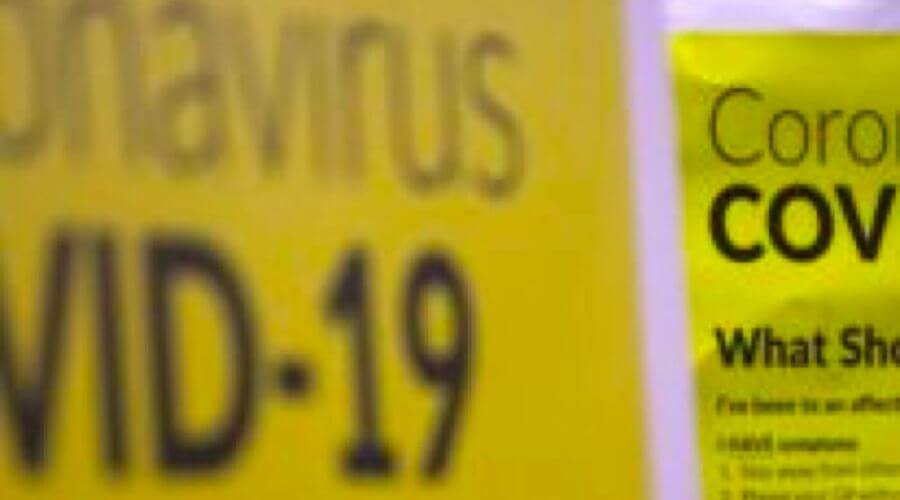
1. What athletes may train during Level 5?
All elite athletes, as defined below, and school going children and young people, aged 18 years or below, may attend club training.
| From: | Elite Athletes It is important to note that protocols as they apply to each sport will be prepared and communicated directly by the respective National Governing Bodies. |
| Non-contact training for school aged children Specific guidance on non-contact training for school agreed children will be issued by Government. In the interim, the following is advised: • Underage activity refers to those in primary and secondary school who are aged 18 years and younger • Participants and coaches may travel beyond the 5km limit to attend training. Car-pooling should continue to be avoided • Outdoor facilities may open only to allow the activity to take place. Only those participating in and conducting the training session should attend. |
2. How many children may train together?
Pods of 15 including the coaches may train outdoors together socially distanced and following good hygiene etiquette.
3. How many pods are permitted in an outdoor setting?
Multiple pods may train where space allows for social distancing.
4. What is the definition of an elite athlete?
Senior international athletes are defined as elite. [This updates the previous definition as below:
| From: | Elite Athletes It is important to note that protocols as they apply to each sport will be prepared and communicated directly by the respective National Governing Bodies. |
5. May school-going children and elite athletes travel beyond the 5km limit to attend training?
Yes, they may.
6. May coaches travel beyond the 5km limit to deliver training sessions?
Yes, coaches are permitted to travel over 5km to attend club training sessions.
7. May athletes and coaches cross county boundaries?
Yes, if travelling to a club training.
8. May we use indoor facilities for training?
No, indoor facilities remain closed under level 5.
9. Must we continue using the Athletics Ireland booking app and health questionnaire before every training session?
Yes, for contact tracing purposes the booking app and the health questionnaire should be used before each training session. Link to Athletics Ireland booking app. Clubs may use their own internal booking app/questionnaire, but whichever app is used, completion of a Contact tracing / health questionnaire is mandatory.
10. May athletes and coaches cross from the six counties into the Republic?
Yes, for the purpose of delivering a club training session for school going children 18 years or younger and elite athletes.
11. Does all equipment e.g. hurdles, javelins, shots, etc., require sanitising before and after use?
Yes, the guidelines regarding sanitising equipment remain in place.
12. May adults train collectively in groups?
No, only individual training for adults is allowed.
13. May competitions or matches take place?
No, competitions or matches may not take place during level 5.
Any additional queries on the content should be raised directly with the HSPC via +353 1 8765300 / This email address is being protected from spambots. You need JavaScript enabled to view it.
Some key recommendations include:
• In public settings, when considering the options of cloths face coverings compared with visors, expert opinion and international guidance generally favours cloth face coverings.
• There is a rationale and laboratory evidence in particular for favouring cloth face coverings over visors where the wearer is at a higher level (standing) than those potentially exposed at a lower level (sitting).
• However, there is evidence that visors do reduce exposure to droplets to a certain extent and may be an alternative in certain circumstance includingPeople with breathing difficulties
- People who are unable to remove masks/face coverings without help
- Anyone with particular needs who may feel upset or very uncomfortable wearing the mask/face covering
- In settings where people who have learning difficulties or hard of hearing or deaf are present.
• Where cloth face coverings are used, it should be of multiple layers of suitable fabric and correctly applied. Further information on the handling and care of cloth face coverings can be found here.
• Where visors are used they should cover the entire face (above the eyes to below the chin and wrap around from ear to ear) and be correctly applied. Further information on the handling and care of visors can be found here.
Athletics Ireland FAQs - July 8th 2020
Return to Activity Guidelines (Previously Issued):
Road Race Event Organiser Guidelines
Road Race Volunteer, Staff and Marshalls Guidelines
Road Race Participant Guidelines
Monday November 2nd 2020
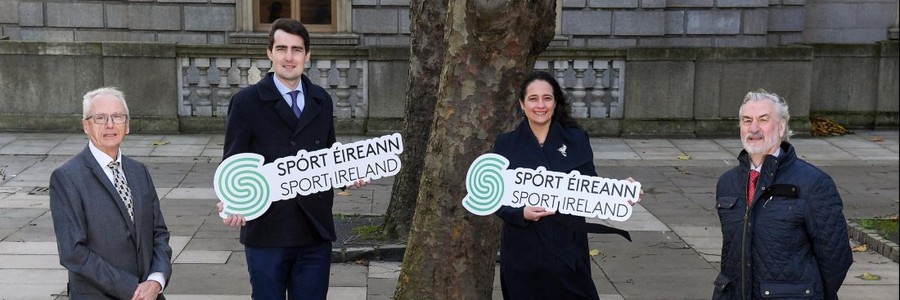
Minister Chambers added: “Sport has demonstrated its resilience throughout the ongoing pandemic. It is important that this resilience continues into the weeks and months ahead as we look to emerge from this crisis. The funding announced today will assist our sporting organisations and clubs in getting everyone active and keeping them active. This has never been more important and is essential for our physical and mental wellbeing. As we look to the future, it will ensure our high performance athletes and teams are as well prepared as possible ahead of the Tokyo Olympic and Paralympic Games. Similarly, it is vital that sports organisations are ready to return to activity as soon as public health circumstances allow. ”
Athletics Ireland CEO, Hamish Adams said: "On behalf of Athletics Ireland I wish to personally thank the Minister for Tourism, Culture, Arts, Gaeltacht, Sport & Media, Catherine Martin TD and the Minister of State for Sport and Gaeltacht Affairs, Jack Chambers TD for this much needed funding. All sport is suffering at this time and this significant investment by the State will ensure that we continue to deliver programmes that continue to support the health and well being of our nation."
Key to the schemes is support of grassroots across the country through schemes delivered through Sport Ireland’s network of Local Sports Partnerships and through National Governing Bodies. Approximately €20 million will benefit thousands of clubs through the various schemes.
Chairman of Sport Ireland, Kieran Mulvey, commented: “The funding being allocated today will provide relief for funded bodies and clubs. It will provide much needed financial stability to the entire sector and has given organisations the confidence to continue trading through these difficult times. The funding recognises the wider economic and social impact of sport and the significant costs arising from the real threat of insolvency to sporting bodies. The needs of the disability sector were specifically addressed with a dedicated group being established to examine any particular issues arising during the Covid-19 pandemic; this has been recognised in our funding allocations. While the circumstances are unfortunate, Sport Ireland’s investment in 2020 is the largest ever investment package for sport. The recent budget announcement by the Ministers has reinforced that sense of confidence that support is available and we look forward to working with our funded bodies to address their needs in 2021.”
It has been recognised that the changing environment of restrictions has resulted in uncertainty and difficulty in planning for National Governing Bodies. This has been taken into consideration by Sport Ireland with funds being ring-fenced specifically to the address this issue.
Chief Executive of Sport Ireland, John Treacy, said: “The initial schemes announced in June were designed to support Organisations with Covid-19 related losses in 2020. However, having engaged with our funded bodies, we understand that the current Level 5 restrictions present additional challenges. As such, we are ring-fencing finances to address any immediate needs that may arise in the sector in the coming weeks. Sport has shown itself to be incredibly resilient throughout the Covid-19 restrictions having made a critical contribution to Irish life with more people being active than ever before. Through exemptions put in place by Government, we have been able to follow high performance and professional athletes and teams, which has provided a welcome lift to the nation. We look forward to working with the sector in the challenging weeks and months ahead, and will continue to provide ongoing support.”
Download Covid-19 Funding Allocation
Notes on Funding Schemes:
20 National Governing Bodies will be supported with in excess of €5 million to offset 2020 losses. Broadly, this funding encompasses the loss of income from events, ticket sales, sponsorship, affiliation & membership fees, courses and services and the additional costs arising from the implementation of social distancing and Covid-19 protocols.
| Total NGB Funding Allocations: | |
|---|---|
| Organisation | Total € |
| Gaelic Games - GAA, LGFA, Camogie, GAA Handball | 30,795,000* |
| Irish Rugby Football Union | 18,000,000 |
| Football Association of Ireland | 13,000,000 |
| Golf Ireland / CGI | 2,730,000 |
| Cricket Ireland | 1,498,500 |
| Gymnastics Ireland | 1,380,000 |
| Basketball Ireland | 1,157,500 |
| Horse Sport Ireland | 1,040,000 |
| Tennis Ireland | 950,000 |
| Athletics Ireland | 805,000 |
| Swim Ireland | 780,000 |
| Irish Sailing | 650,000 |
| Irish Athletic Boxing Association | 645,000 |
| Cycling Ireland | 533,000 |
| Badminton Ireland | 369,000 |
| Hockey Ireland | 240,500 |
| Triathlon Ireland | 235,500 |
| Rowing Ireland | 149,000 |
| Irish Martial Arts Commission | 120,000 |
| National Community Games | 110,000 |
| Archery Ireland | 101,000 |
| Student Sport Ireland | 95,000 |
| Irish Orienteering Association | 77,000 |
| Volleyball Ireland | 71,500 |
| Irish Underwater Council | 70,000 |
| Fencing Ireland | 59,000 |
| Motor Cycling Ireland | 50,000 |
| Irish Surfing Association | 50,000 |
| Bowling League of Ireland | 50,000 |
| Canoeing Ireland | 48,000 |
| ONAKAI | 40,000 |
| Pitch and Putt Ireland | 39,000 |
| Irish Squash | 38,000 |
| Racquetball Association of Ireland | 33,000 |
| Special Olympics Ireland | 348,000 |
| IWA Sport | 194,000 |
| Vision Sports Ireland | 97,500 |
| Irish Judo Association | 24,000 |
| Irish Ice Hockey Association | 20,000 |
| Rugby League Ireland | 19,000 |
| Bol Chumann na hEireann | 12,500 |
| Totals | 76,724,500 |
Notes on Funding Schemes:
The Club Resilience Fund supports Sports Clubs that find themselves in need of assistance due to Covid-19. NGBs could elect to apply for funding directly on behalf of affiliated Clubs. Alternatively, NGBs provided an estimated level of support required for their club network and propose to run a Covid-19 Club Support Grant Scheme directly.
It is recognised that any of the challenges faced by Governing Bodies are replicated across their club network with income from affiliation & membership fees, events, competition, coaching courses and ancillary services all reduced. The additional costs arising from the implementation of social distancing and Covid-19 protocols have also had a significant impact on most club activities where the sharing of equipment, facilities and resources is common place.
Sport Ireland will not fund Clubs, Affiliates, Provinces or Branches directly and funding will be accessed through programmes established by each of the National Governing Bodies in receipt of funding.
| Breakdown of NGB Funding Allocations: | ||||
|---|---|---|---|---|
| Organisation | Scheme Two | Scheme Three | Scheme Four | Total |
| Golf Ireland | - | 2,700,000 | 30,000 | 2,730,000 |
| Cricket Ireland | 1,109,000 | 197,500 | 192,000 | 1,498,500 |
| Gymnastics Ireland | 270,000 | 1,000,000 | 110,000 | 1,380,000 |
| Basketball Ireland | 550,000 | 600,000 | 7,500 | 1,157,500 |
| Horse Sport Ireland | - | 1,000,000 | 40,000 | 1,040,000 |
| Tennis Ireland | 150,000 | 800,000 | - | 950,000 |
| Athletics Ireland | - | 590,000 | 215,000 | 805,000 |
| Swim Ireland | 100,000 | 500,000 | 180,000 | 780,000 |
| Irish Sailing | 100,000 | 550,000 | - | 650,000 |
| Irish Athletic Boxing Association | 145,000 | 500,000 | - | 645,000 |
| Cycling Ireland | 283,000 | - | 250,000 | 533,000 |
| Badminton Ireland | 75,000 | 294,000 | - | 369,000 |
| Hockey Ireland | 71,000 | 169,500 | - | 240,500 |
| Triathlon Ireland | 83,000 | 100,000 | 52,500 | 235,500 |
| Rowing Ireland | 90,000 | 32,000 | 27,000 | 149,000 |
| Irish Martial Arts Commission | - | 120,000 | - | 120,000 |
| National Community Games | 60,000 | 50,000 | - | 110,000 |
| Archery Ireland | 15,000 | 62,000 | 24,000 | 101,000 |
| Student Sport Ireland | - | - | 95,000 | 95,000 |
| Irish Orienteering Association | - | - | 77,000 | 77,000 |
| Volleyball Ireland | - | 21,500 | 50,000 | 71,500 |
| Irish Underwater Council | - | 70,000 | - | 70,000 |
| Fencing Ireland | - | 59,000 | - | 59,000 |
| Motor Cycling Ireland | 50,000 | - | - | 50,000 |
| Irish Surfing Association | 50,000 | - | - | 50,000 |
| Bowling League of Ireland | - | 50,000 | - | 50,000 |
| Canoeing Ireland | - | 48,000 | - | 48,000 |
| ONAKAI | - | 40,000 | - | 40,000 |
| Pitch and Putt Ireland | - | 39,000 | - | 39,000 |
| Irish Squash | - | 28,000 | 10,000 | 38,000 |
| Racquetball Association of Ireland | - | 33,000 | - | 33,000 |
| Special Olympics Ireland | - | - | 348,000 | 348,000 |
| IWA Sport | - | - | 194,000 | 194,000 |
| Vision Sports Ireland | - | - | 97,500 | 97,500 |
| Irish Judo Association | - | 24,000 | - | 24,000 |
| Irish Ice Hockey Association | 20,000 | - | - | 20,000 |
| Rugby League Ireland | 9,000 | 10,000 | - | 19,000 |
| Bol Chumann na hEireann | - | 12,500 | - | 12,500 |
NGBs, LSPs and other funded bodies were invited to apply for funding under this scheme.
Funding aims specifically to promote and develop new programmes and projects that can advance sport and physical activity in the post-Covid-19 public health era. Collaboration between sports organisations is encouraged; reference to the National Sports Policy is essential.
Scheme four – LSP small grants €1.9m supporting over 1600 clubs, dedicated funding for Disability and Older Adults, Broad range of Innovative and restart projects supported through LSPs/NGBs.
A Sports Restart and Renewal Fund of up to €5 million has been made available to support four primary focus areas:
1) An LSP Led Small Grants Scheme
2) A Disability Sport Support Scheme
3) Older Adults
4) A Sports Innovation Fund
Through this scheme, Local Sports Partnerships were encouraged to operate a local scheme for small clubs and community groups similar to the national club scheme (Scheme Three). These schemes provide an additional mechanism to support community groups & clubs who may not be affiliated to a national organisation or recognised National Governing Body but provide a vital local service.
The primary aim of the grants is to cover the costs associated with implementing Covid-19 hygiene and social distancing protocols. There is a €1,500 limit on this grant scheme and only one application is accepted per club. The club grant scheme is designed and intended to support return to sporting activities only.
In recognition of the disproportionate impact Covid-19 has had on people with a disability, Sport Ireland ring-fenced a proportion of the Scheme to directly target the disability sport sector.
A specific Disability Sport Working Group was established to identify & quantify the unique financial & sporting challenges for organisations delivering in this sector.
The Working Group was comprised of representatives from Special Olympics Ireland, IWA Sport, Vision Sports Ireland & Paralympics Ireland. Disability focused programmes in mainstream Governing Bodies and the broader sports and physical activity sector were represented by both CARA and the LSP Network.
Funding will be provided to Age & Opportunity and Ireland Active to deliver projects for older adults.
| Local Sports Partnership Small Grant Scheme | ||
|---|---|---|
| LSP Name | Number of Clubs Funded | Total € |
| Carlow LSP | 32 | 33,225.00 |
| Cavan LSP | 59 | 70,393.78 |
| Clare LSP | 75 | 70,276.38 |
| Cork LSP | 155 | 174,781.00 |
| Donegal LSP | 73 | 90,648.06 |
| Dublin City LSP | 90 | 94,065.00 |
| Dun Laoghaire Rathdown LSP | 36 | 42,925.00 |
| Galway LSP | 101 | 126,036.73 |
| Kerry LSP | 59 | 74,921.83 |
| Kildare LSP | 44 | 48,509.42 |
| Kilkenny LSP | 18 | 17,797.29 |
| Laois LSP | 35 | 46,570.23 |
| Leitrim LSP | 29 | 34,650.68 |
| Limerick LSP | 94 | 89,126.00 |
| Longford LSP | 39 | 40,422.53 |
| Louth LSP | 80 | 102,247.05 |
| Mayo LSP | 60 | 75,450.00 |
| Meath LSP | 118 | 139,195.48 |
| Monaghan LSP | 41 | 55,918.83 |
| Offaly LSP | 44 | 47,995.96 |
| Roscommon LSP | 24 | 29,433.74 |
| Sligo LSP | 52 | 68,776.77 |
| South Dublin LSP | 42 | 55,898.00 |
| Tipperary LSP | 74 | 88,992.84 |
| Waterford LSP | 55 | 67,081.32 |
| Westmeath LSP | 44 | 52,981.25 |
| Wexford LSP | 45 | 45,148.00 |
| Wicklow LSP | 19 | 22,298.83 |
| Total | 1,637 | 1,905,767 |
| Local Sports Partnerships & Participation Sports Innovation Projects | |
|---|---|
| Organisation | Total € |
| Carlow | 49,000 |
| Cavan | 23,400 |
| Cork | 64,500 |
| Donegal | 15,000 |
| Dun Laoghaire Rathdown | 15,000 |
| Galway | 15,000 |
| Kerry | 20,645 |
| Kilkenny | 19,370 |
| Laois | 65,800 |
| Limerick | 10,000 |
| Longford | 12,000 |
| Mayo | 13,400 |
| Meath | 15,000 |
| Monaghan | 8,000 |
| Offaly | 10,000 |
| Roscommon | 4,220 |
| Sligo | 18,600 |
| Tipperary | 17,045 |
| Waterford | 35,345 |
| Wicklow | 18,580 |
| Age and Opportunity | 40,000 |
| Ireland Active | 75,000 |
| Totals | 564,905 |
'The devil is in the detail' - We await details of how Athletics Ireland will allocate it's funding, particularly the €215k under Scheme 4. Clubs may also be eligible for LSP (Local Sports Partnership) funding, under their Small Grant Scheme which "cover the costs associated with implementing Covid-19 hygiene and social distancing protocols. There is a €1,500 limit on this grant scheme and only one application is accepted per club. The club grant scheme is designed and intended to support return to sporting activities only."
Cork Local Sports Partnership was allocated €175k under this heading, while Cork LSP was also allocated an additional €64.5k, under "Local Sports Partnerships & Participation Sports Innovation Projects"
Cork County Board will, in the next few days, be in contact with both AAI and CLSP, to ascertain what funding will be available to Cork County Board and it's member clubs.
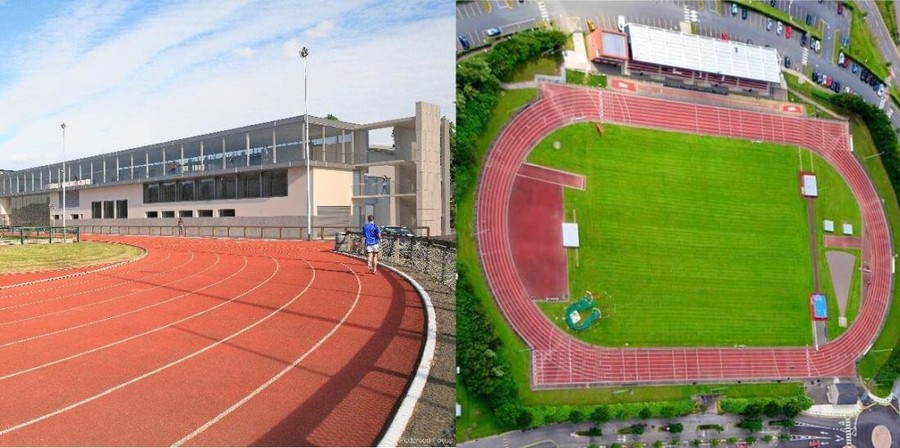 Mardyke & CIT Tracks
Mardyke & CIT Tracks
There was welcome news today that CIT and UCC Mardyke Tracks are both to remain open for booked Juvenile groups, in pods of 15 max.
Both tracks will also remain open for Elite athletes, with provisos. Final details have yet to be released by both UCC and CIT, however, wrt the Mardyke, the elite athletes, in addition to satisfying conditions to confirm elite status, must book the track as a group - it will not be available for individual use.
CIT will also be releasing details of their elite training conditions.
Parents/guardians are permitted to travel more than 5km when taking school aged children to organised club training, as per the Exercise and Sporting Events section of the Ireland is moving to Level 5 document.
From midnight tonight, Wednesday October 21st, the country moves to Covid Level 5, with significant implications for sport.
Athletics ireland is waiting on specific guidance from the Sport Ireland, and asks all members to continue to observe all health guidelines, and to reduce their social interactions.
Government advice is that you must not travel outside the 5km radius from your home, consequently travel is not recommended anyone living further than 5km from their Club.
Training should NOT take place, except with the following exceptions:
Sport Ireland Elite High Performance Sport Definition
Friday October 16th 2020

Athletics Ireland Release, Friday October 16th 2020
"In light of recent developments with regard to Government restrictions, the Competition and Juvenile Committees would like to reaffirm that they will be doing all they can to facilitate the hosting of the National Cross Country Championships. While there are numerous other considerations to take into account, it has been agreed that National Cross Country competitions may be pushed out as far as the end of February 2021 to ensure they can take place.
We appreciate your patience and understanding while details are confirmed."
[Note: Highlighted text emphasis is by Cork Athletics]